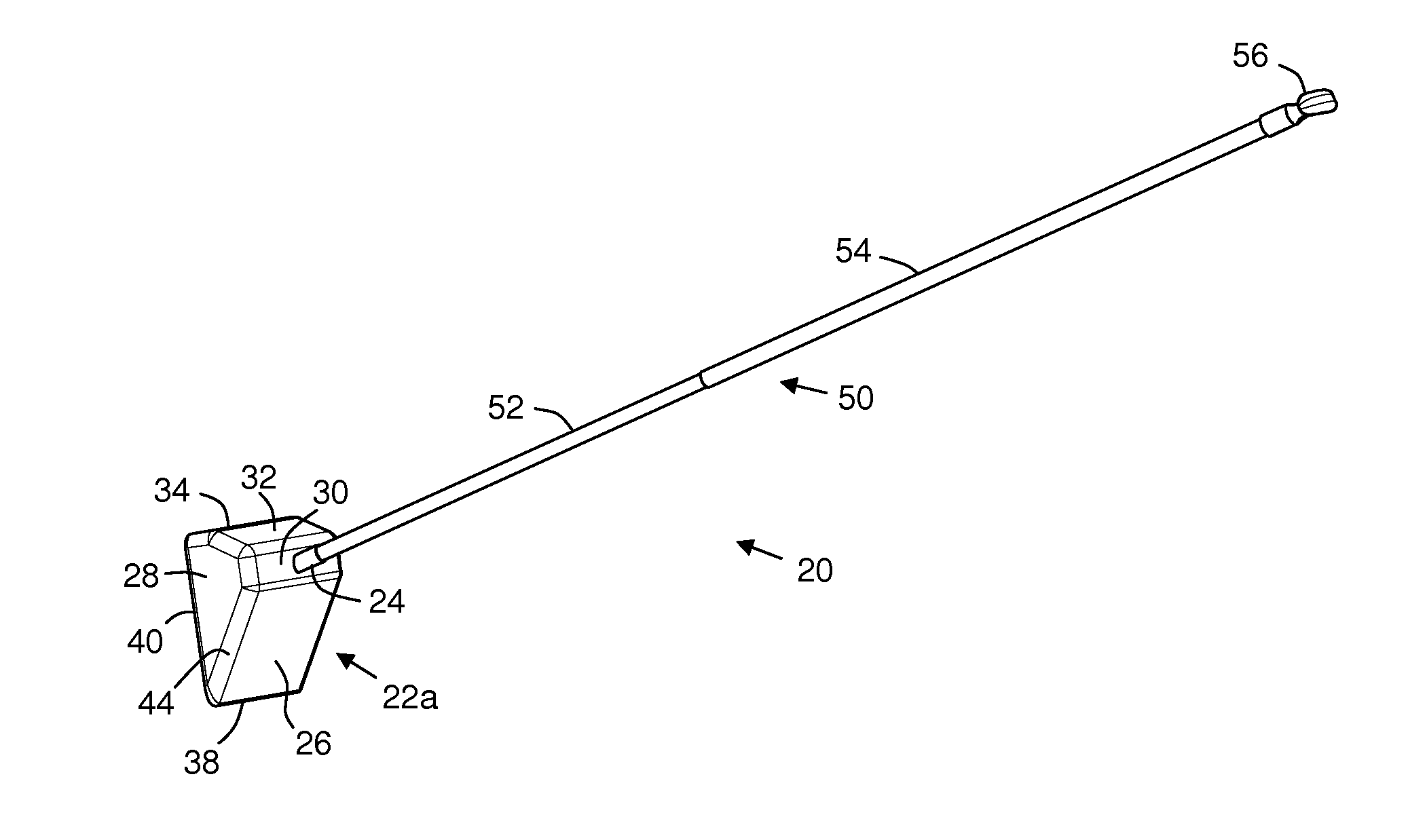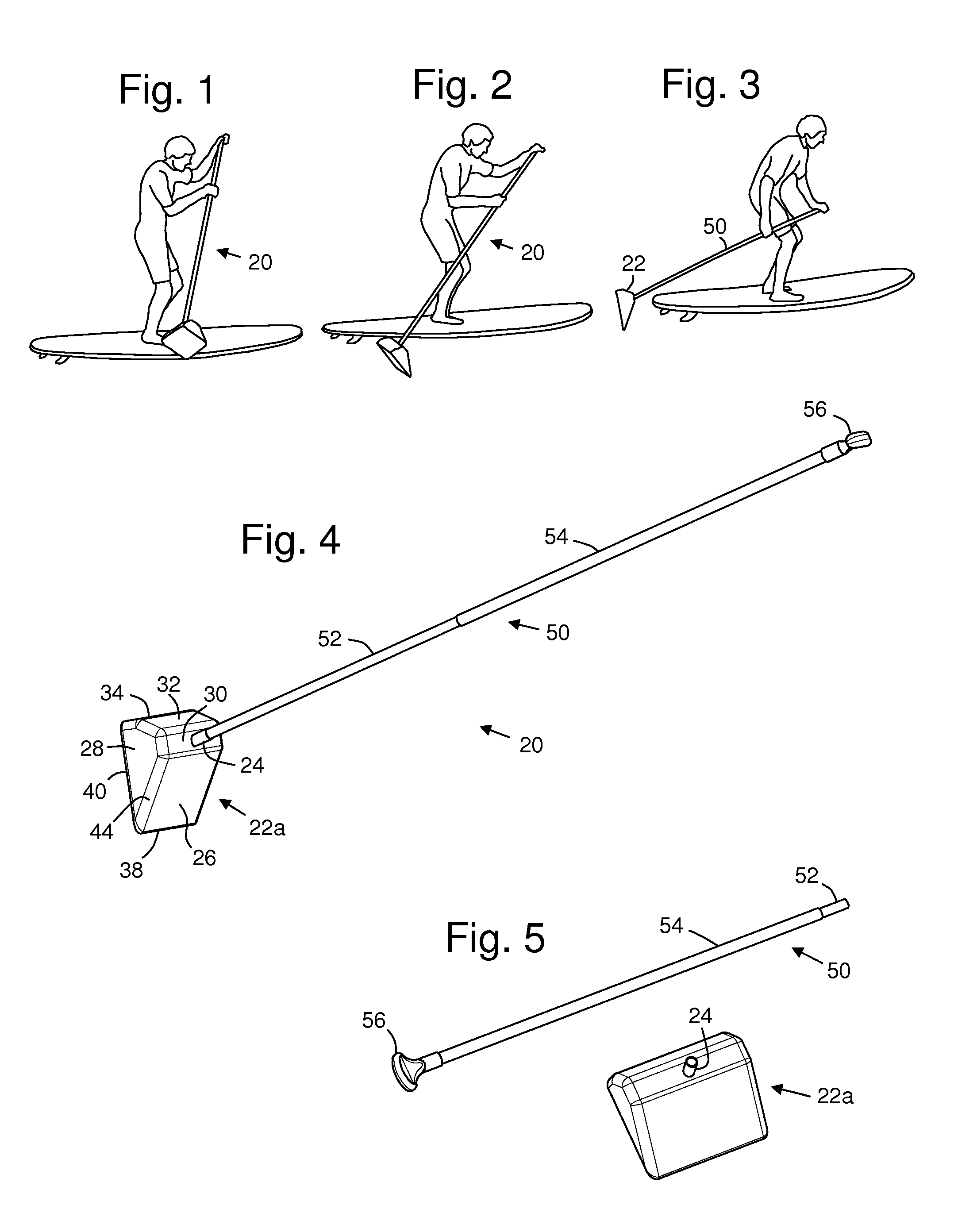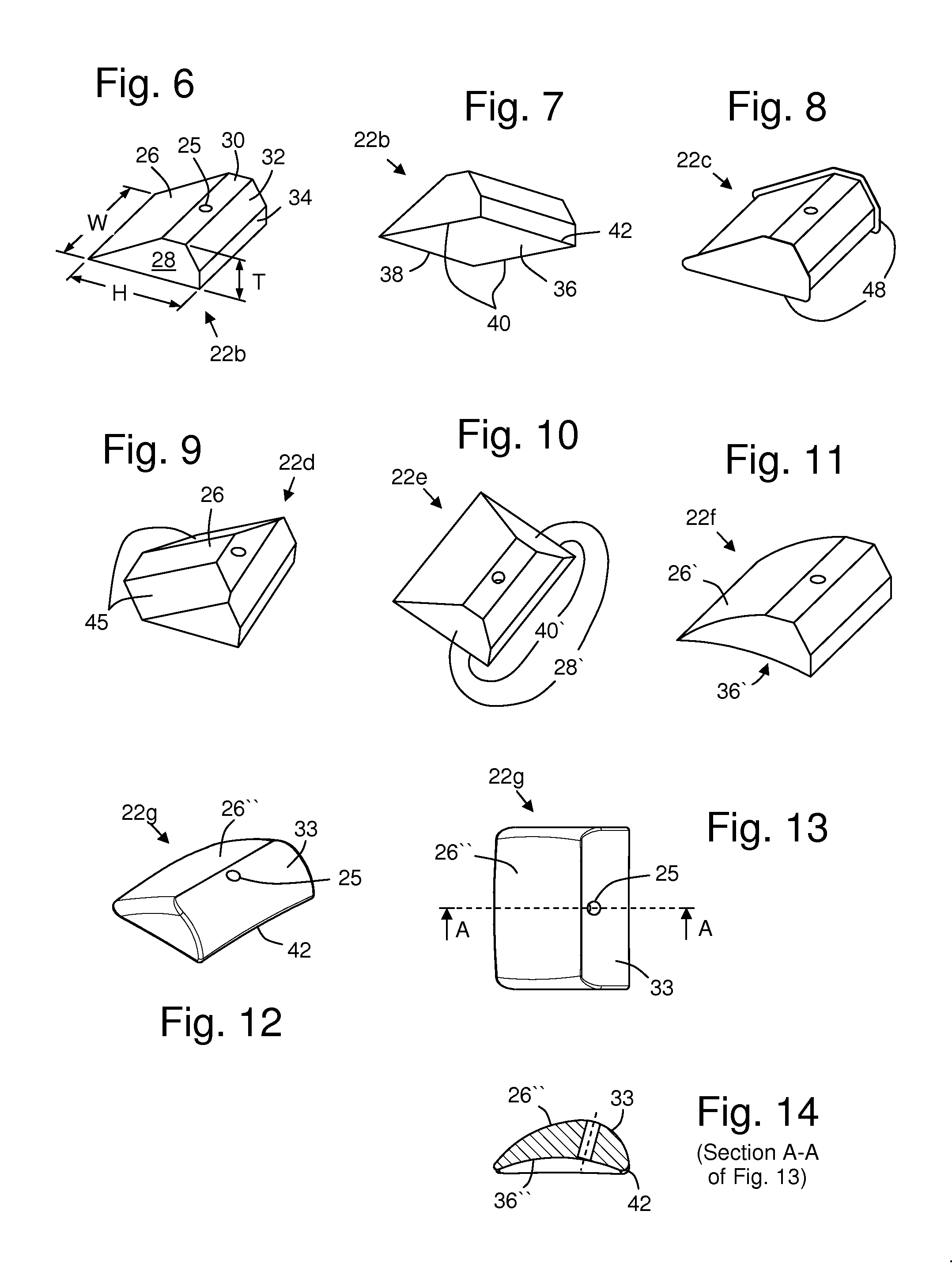Push Paddle
a push paddle and paddle technology, applied in the field of push paddles, can solve the problems of reducing the stroke rate and increasing the risk of watercraft yawing, and achieve the effects of reducing the need for buoyancy, good initial “traction”, and high drag
- Summary
- Abstract
- Description
- Claims
- Application Information
AI Technical Summary
Benefits of technology
Problems solved by technology
Method used
Image
Examples
Embodiment Construction
[0065]FIGS. 1-3 show push-paddle 20 being used to propel a surfboard. Push-paddle 20 comprises pole 50 and push-block 22. The user holds the upper section of the pole, and the bottom end is attached to the push-block 22. In FIG. 1, the user is about to press the push-block 22 down into the water to start the power stroke. In FIG. 2, the push-paddle is in the middle of the power-stroke and the user is applying force mostly in line with the pole axis. In this embodiment of the invention, as shown in FIG. 2, the push-block 22 is slightly underwater. In FIG. 3 the power stroke is complete and the push-block 22 is starting to emerge from the water aided by its buoyancy.
[0066]FIG. 4 shows a perspective view of push-paddle 20 with additional details. Push-block 22a is wedge-shaped. The top face 26 of the wedge, and bottom face 36 (not visible) intersect to form wedge-edge 38. Sidewalls 28 intersect the bottom face to form side edges 40, and intersect the top surface 26 to form top edges 44...
PUM
 Login to view more
Login to view more Abstract
Description
Claims
Application Information
 Login to view more
Login to view more - R&D Engineer
- R&D Manager
- IP Professional
- Industry Leading Data Capabilities
- Powerful AI technology
- Patent DNA Extraction
Browse by: Latest US Patents, China's latest patents, Technical Efficacy Thesaurus, Application Domain, Technology Topic.
© 2024 PatSnap. All rights reserved.Legal|Privacy policy|Modern Slavery Act Transparency Statement|Sitemap



